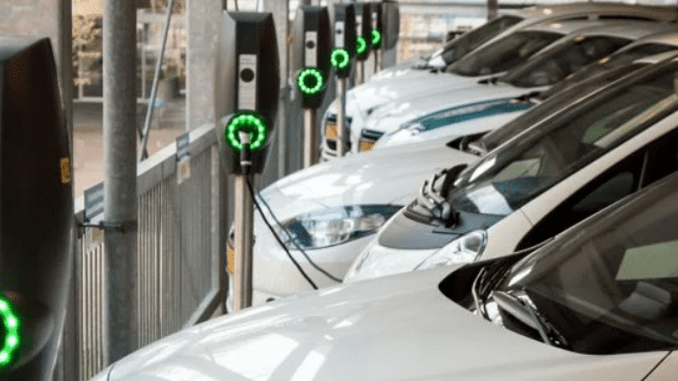
PALO ALTO, California, January 27, 2022 (ENS) – California Governor Gavin Newsom Wednesday outlined his $10 billion zero-emission vehicle, ZEV, package to accelerate the transition to zero-emission vehicles and fight climate change. The package is a critical part of Governor Newsom’s overall plan to cement California’s status as a world leader in forging an oil-free future.
Electric vehicles have become one of the state’s top exports, and California represents half of the United States’ ZEV market. These actions are tackling the single largest culprit of pollution in California – the tailpipe, the governor said.
“The future is electric, and we’re making it easier and cheaper than ever before to go electric. That means more assistance to help folks buy clean cars and more charging stations in more communities throughout the state,” said Governor Newsom. “California is eliminating our dependence on oil and providing a blueprint for the entire world on how to aggressively fight the climate crisis while growing the state’s clean energy economy.”
Building upon last year’s $3.9 billion investment in zero-emission vehicles, Governor Newsom is proposing to inject another $6.1 billion to accelerate this transition. He says the total $10 billion ZEV package will help make these vehicles more affordable and convenient for all Californians, while building out the infrastructure and charging stations needed to facilitate this transition.
The $10 billion ZEV package builds on Newsom’s first-in-the-nation action to shift the California automotive industry to all electric by 2035, utilizing the state’s market dominance to accelerate the transition to zero-emission vehicles across the world and reduce California’s reliance on fossil fuels.
“To achieve California’s climate goals we must focus on the needs of the most polluted and underserved neighborhoods. Governor Newsom’s ZEV investment proposal recognizes this reality,” said Alvaro Sanchez, vice president of policy at The Greenlining Institute, a community advocacy group based in Oakland. “We’re excited to work with the governor and the Legislature to prove to the rest of the country that we can not only advance our climate agenda but also advance equity.”
Large investments include:
• Low-Income Zero-Emission Vehicles and Infrastructure: $256 million for low-income consumer purchases, and $900 million to expand affordable and convenient ZEV infrastructure access in low-income neighborhoods. These investments will focus on planning and deploying grid-friendly high-power fast chargers and at-home charging.
• Heavy-Duty Zero-Emission Vehicles and Supporting Infrastructure: $935 million to add 1,000 zero-emission short-haul trucks and 1,700 zero-emission transit buses; $1.5 billion Proposition 98 to support school transportation programs, including advancing electric school buses in a coordinated effort between educational, air pollution, and energy agencies; $1.1 billion for zero-emission trucks, buses and off-road equipment and fueling infrastructure; and $400 million to enable port electrification.
• Zero-Emission Mobility: $419 million to support sustainable community-based transportation equity projects that increase access to zero-emission mobility in low-income communities. This includes supporting clean mobility options, sustainable transportation and equity projects, and plans that have already been developed by communities that address critical mobility needs identified by community-based organizations and residents working on the front lines to lift up priority populations.
• Emerging Opportunities: $200 million to invest in demonstration and pilot projects in high carbon-emitting sectors, such as maritime, aviation, rail and other off-road applications, as well as support for vehicle grid integration at scale. These investments will help maintain California’s role as the hub of ZEV market creation and innovation, creating economic development opportunities while accelerating zero-emission solutions in the hardest-to-reach segments of the transportation system.
Governor Newsom says California has become “a working model for how to fight the climate crisis while bolstering the clean energy economy, and what we’re doing here is unprecedented in both nature and scale.” California was the first state in the nation to end the sale of new gas cars by 2035, and the first in the world to require heavy duty truck manufacturers to transition to zero-emission vehicles by 2045.
Featured image: Electric cars charging their batteries in California. (Photo courtesy California Public Utilities Commission)
© 2022, Environment News Service. All rights reserved. Content may be quoted only with proper attribution and a direct link to the original article. Full reproduction is prohibited.



